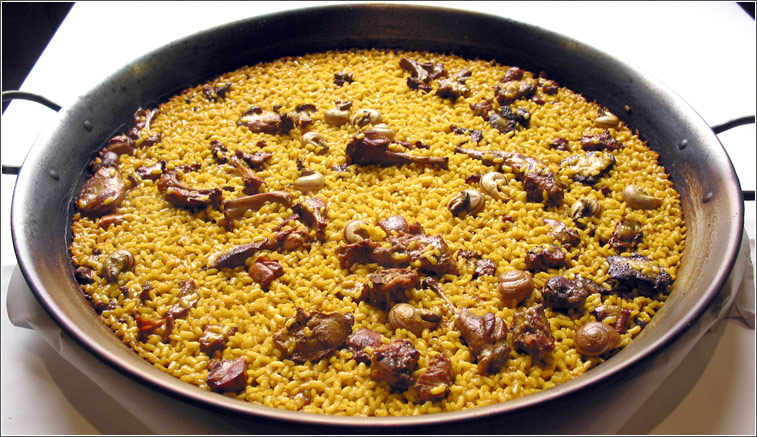Rice and paella

Spaniards can happily talk for hours about food. One never-ending topic of conversation is the “best” way to make almost any traditional dish, from fabada to cocido. This piece is about paella, or maybe rice. For a few years, I have made a rice dish at home that I describe as paella to Maggie. I would never make the mistake of describing it as paella to any Spanish person. I would always describe it as rice with things. That’s because I added things that are “not allowed” – like pepper and onions – and I use pre-prepared caldo, a ready-made broth, to cook it in. However wrong my version was it was a quick and easy meal for me to cook that we both liked. The principal taste came from the broth prepared by a company called Fallera, who ruined the whole thing by discontinuing the broth. Since then, I have tried several other ready-prepared broths and I’ve liked none of them. Next, I worked my way through a couple of varieties of packets of powdered flavourings that can be added to the wat...




